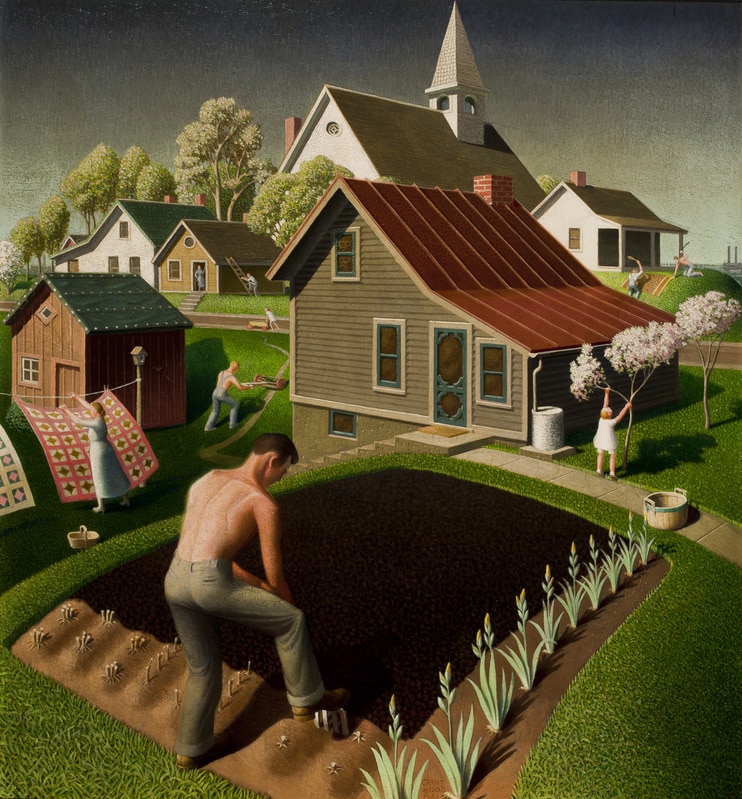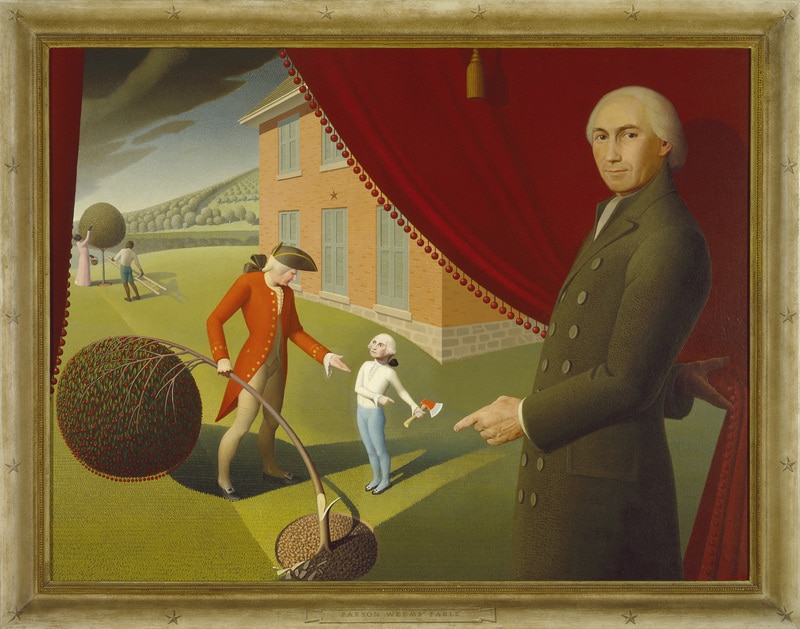
Grant Wood: American Gothic and Other Fables
Through June 10, 2018
From the museum:
The upcoming Grant Wood retrospective at the Whitney Museum of American Art will reassess the career of an artist whose most famous work, “American Gothic” — one of the most indelible emblems of Americana and perhaps the best-known work of twentieth-century American art — will be making a rare voyage from the Art Institute of Chicago for the occasion.

“Grant Wood: American Gothic and Other Fables” brings together the full range of Wood’s art, from his early Arts and Crafts decorative objects and Impressionist oils through his mature paintings, murals, works on paper, and book illustrations. The exhibition reveals a complex, sophisticated artist whose image as a farmer-painter was as mythical as the fables he depicted in his art.

Grant Wood (1891–1942) achieved instant celebrity following the debut of “American Gothic” at the Art Institute of Chicago in 1930. Until then, he had been a relatively unknown painter of French-inspired Impressionist landscapes in Cedar Rapids, Iowa. His relatively short mature career, from 1930 to 1942, spanned a tormented period for the country, as the United States grappled with the aftermath of an economic meltdown and engaged in bitter debates over its core national identity.

What emerged as a powerful strain in popular culture during the period was a pronounced reverence for the values of community, hard work, and self-reliance that were seen as fundamental to the national character, embodied most fully in America’s small towns and on its farms. Wood’s romanticized depictions of a seemingly more innocent and uncomplicated time elevated him into a popular, almost mythic figure, celebrated for his art and promotion of Regionalism, the representational style associated with the Midwest that dominated American art during the Depression.

Sign up to receive Fine Art Today, the weekly e-newsletter from
Fine Art Connoisseur magazine.







